Qin Hu
Upcycling Noise for Federated Unlearning
Dec 07, 2024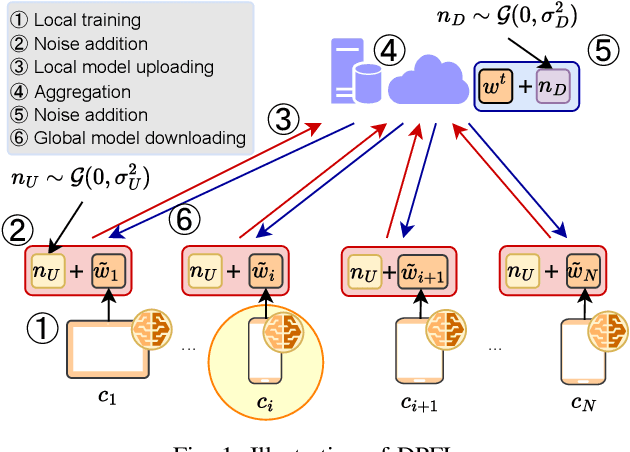
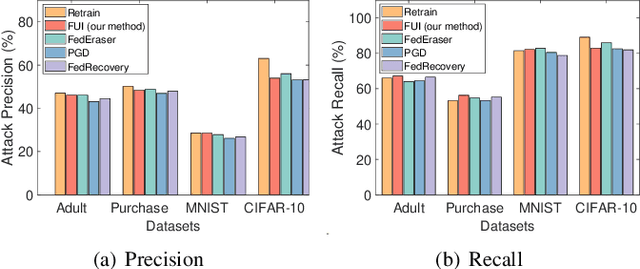
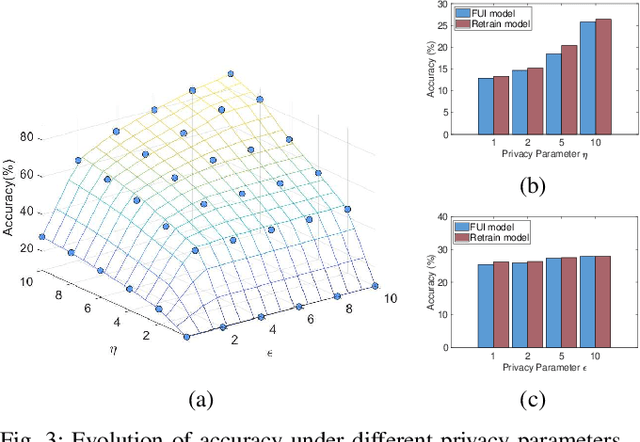
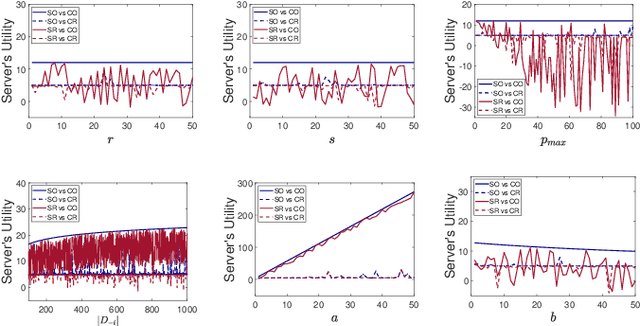
Abstract:In Federated Learning (FL), multiple clients collaboratively train a model without sharing raw data. This paradigm can be further enhanced by Differential Privacy (DP) to protect local data from information inference attacks and is thus termed DPFL. An emerging privacy requirement, ``the right to be forgotten'' for clients, poses new challenges to DPFL but remains largely unexplored. Despite numerous studies on federated unlearning (FU), they are inapplicable to DPFL because the noise introduced by the DP mechanism compromises their effectiveness and efficiency. In this paper, we propose Federated Unlearning with Indistinguishability (FUI) to unlearn the local data of a target client in DPFL for the first time. FUI consists of two main steps: local model retraction and global noise calibration, resulting in an unlearning model that is statistically indistinguishable from the retrained model. Specifically, we demonstrate that the noise added in DPFL can endow the unlearning model with a certain level of indistinguishability after local model retraction, and then fortify the degree of unlearning through global noise calibration. Additionally, for the efficient and consistent implementation of the proposed FUI, we formulate a two-stage Stackelberg game to derive optimal unlearning strategies for both the server and the target client. Privacy and convergence analyses confirm theoretical guarantees, while experimental results based on four real-world datasets illustrate that our proposed FUI achieves superior model performance and higher efficiency compared to mainstream FU schemes. Simulation results further verify the optimality of the derived unlearning strategies.
ViT-MDHGR: Cross-day Reliability and Agility in Dynamic Hand Gesture Prediction via HD-sEMG Signal Decoding
Sep 22, 2023Abstract:Surface electromyography (sEMG) and high-density sEMG (HD-sEMG) biosignals have been extensively investigated for myoelectric control of prosthetic devices, neurorobotics, and more recently human-computer interfaces because of their capability for hand gesture recognition/prediction in a wearable and non-invasive manner. High intraday (same-day) performance has been reported. However, the interday performance (separating training and testing days) is substantially degraded due to the poor generalizability of conventional approaches over time, hindering the application of such techniques in real-life practices. There are limited recent studies on the feasibility of multi-day hand gesture recognition. The existing studies face a major challenge: the need for long sEMG epochs makes the corresponding neural interfaces impractical due to the induced delay in myoelectric control. This paper proposes a compact ViT-based network for multi-day dynamic hand gesture prediction. We tackle the main challenge as the proposed model only relies on very short HD-sEMG signal windows (i.e., 50 ms, accounting for only one-sixth of the convention for real-time myoelectric implementation), boosting agility and responsiveness. Our proposed model can predict 11 dynamic gestures for 20 subjects with an average accuracy of over 71% on the testing day, 3-25 days after training. Moreover, when calibrated on just a small portion of data from the testing day, the proposed model can achieve over 92% accuracy by retraining less than 10% of the parameters for computational efficiency.
Pit-Pattern Classification of Colorectal Cancer Polyps Using a Hyper Sensitive Vision-Based Tactile Sensor and Dilated Residual Networks
Nov 13, 2022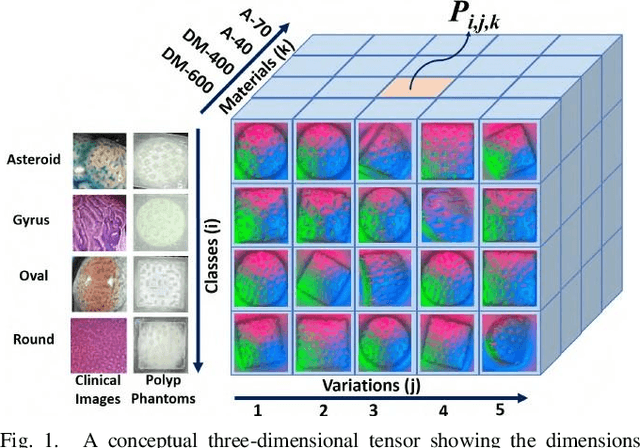
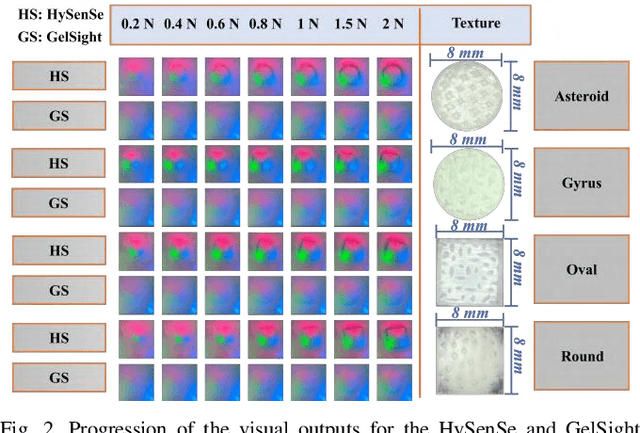
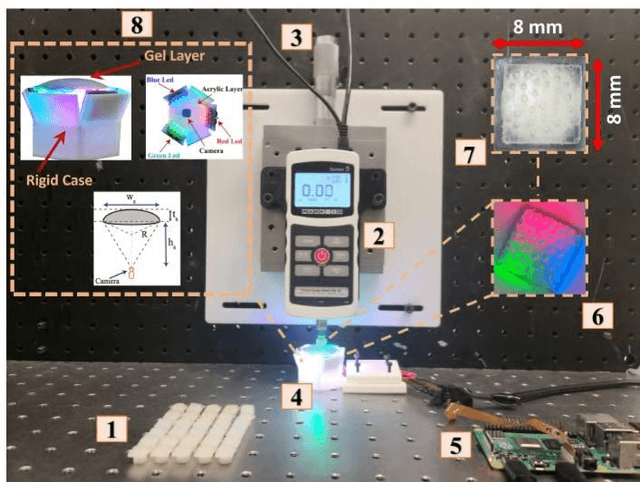
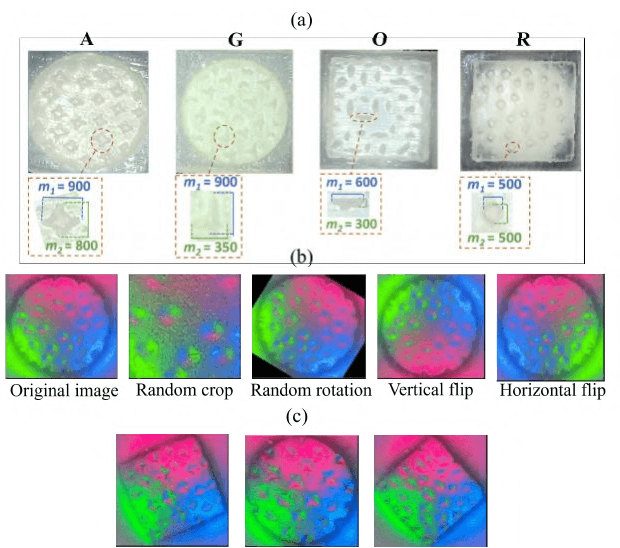
Abstract:In this study, with the goal of reducing the early detection miss rate of colorectal cancer (CRC) polyps, we propose utilizing a novel hyper-sensitive vision-based tactile sensor called HySenSe and a complementary and novel machine learning (ML) architecture that explores the potentials of utilizing dilated convolutions, the beneficial features of the ResNet architecture, and the transfer learning concept applied on a small dataset with the scale of hundreds of images. The proposed tactile sensor provides high-resolution 3D textural images of CRC polyps that will be used for their accurate classification via the proposed dilated residual network. To collect realistic surface patterns of CRC polyps for training the ML models and evaluating their performance, we first designed and additively manufactured 160 unique realistic polyp phantoms consisting of 4 different hardness. Next, the proposed architecture was compared with the state-of-the-art ML models (e.g., AlexNet and DenseNet) and proved to be superior in terms of performance and complexity.
Incentive Mechanism Design for Joint Resource Allocation in Blockchain-based Federated Learning
Feb 18, 2022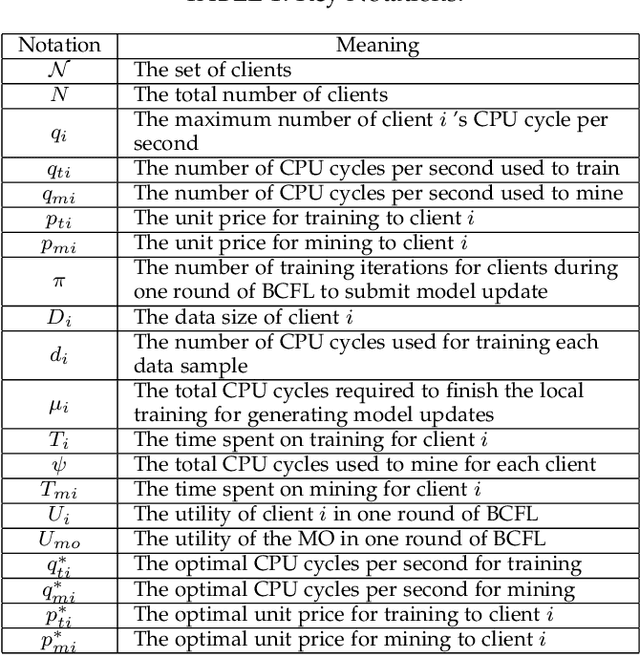
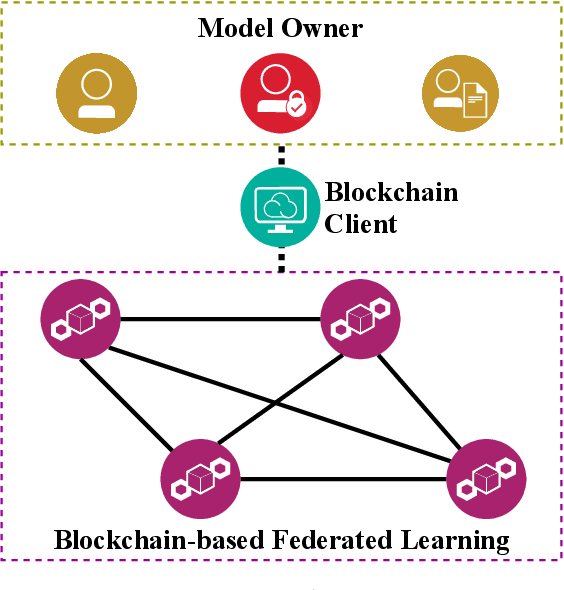
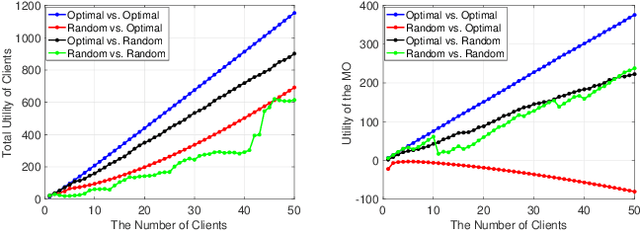
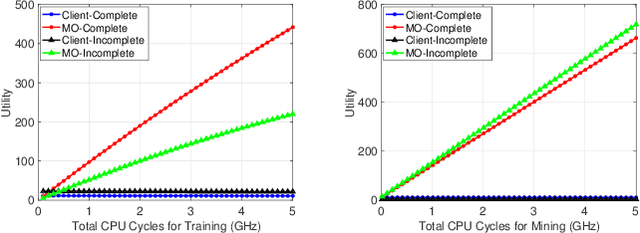
Abstract:Blockchain-based federated learning (BCFL) has recently gained tremendous attention because of its advantages such as decentralization and privacy protection of raw data. However, there has been few research focusing on the allocation of resources for clients in BCFL. In the BCFL framework where the FL clients and the blockchain miners are the same devices, clients broadcast the trained model updates to the blockchain network and then perform mining to generate new blocks. Since each client has a limited amount of computing resources, the problem of allocating computing resources into training and mining needs to be carefully addressed. In this paper, we design an incentive mechanism to assign each client appropriate rewards for training and mining, and then the client will determine the amount of computing power to allocate for each subtask based on these rewards using the two-stage Stackelberg game. After analyzing the utilities of the model owner (MO) (i.e., the BCFL task publisher) and clients, we transform the game model into two optimization problems, which are sequentially solved to derive the optimal strategies for both the MO and clients. Further, considering the fact that local training related information of each client may not be known by others, we extend the game model with analytical solutions to the incomplete information scenario. Extensive experimental results demonstrate the validity of our proposed schemes.
Blockchain and Federated Edge Learning for Privacy-Preserving Mobile Crowdsensing
Oct 16, 2021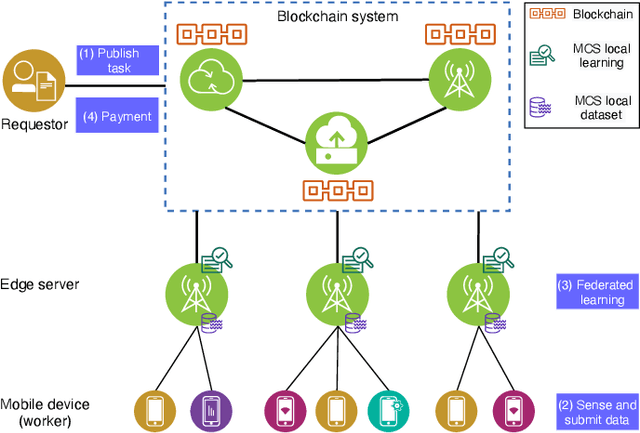
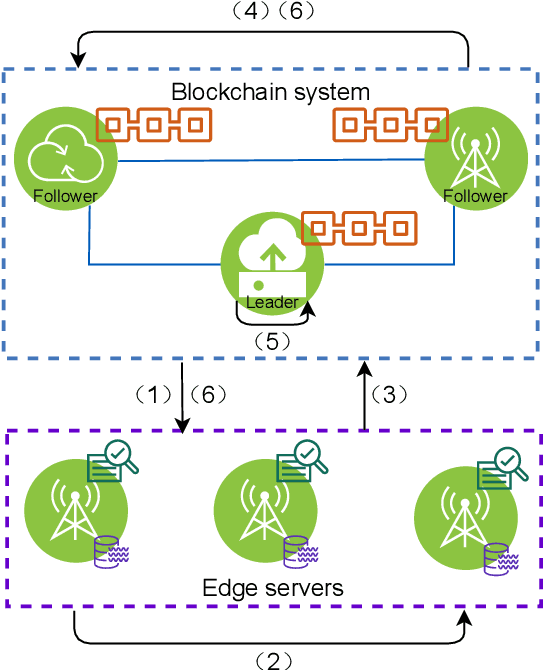
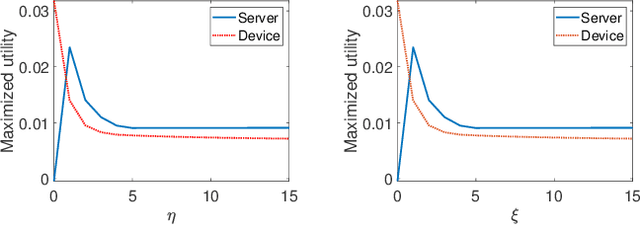
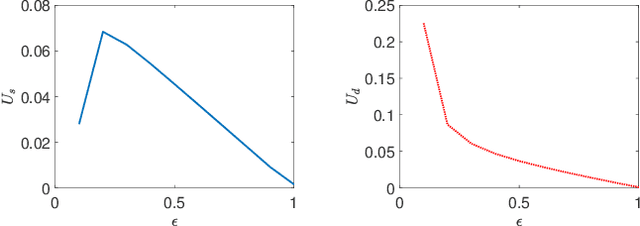
Abstract:Mobile crowdsensing (MCS) counting on the mobility of massive workers helps the requestor accomplish various sensing tasks with more flexibility and lower cost. However, for the conventional MCS, the large consumption of communication resources for raw data transmission and high requirements on data storage and computing capability hinder potential requestors with limited resources from using MCS. To facilitate the widespread application of MCS, we propose a novel MCS learning framework leveraging on blockchain technology and the new concept of edge intelligence based on federated learning (FL), which involves four major entities, including requestors, blockchain, edge servers and mobile devices as workers. Even though there exist several studies on blockchain-based MCS and blockchain-based FL, they cannot solve the essential challenges of MCS with respect to accommodating resource-constrained requestors or deal with the privacy concerns brought by the involvement of requestors and workers in the learning process. To fill the gaps, four main procedures, i.e., task publication, data sensing and submission, learning to return final results, and payment settlement and allocation, are designed to address major challenges brought by both internal and external threats, such as malicious edge servers and dishonest requestors. Specifically, a mechanism design based data submission rule is proposed to guarantee the data privacy of mobile devices being truthfully preserved at edge servers; consortium blockchain based FL is elaborated to secure the distributed learning process; and a cooperation-enforcing control strategy is devised to elicit full payment from the requestor. Extensive simulations are carried out to evaluate the performance of our designed schemes.
Nothing Wasted: Full Contribution Enforcement in Federated Edge Learning
Oct 15, 2021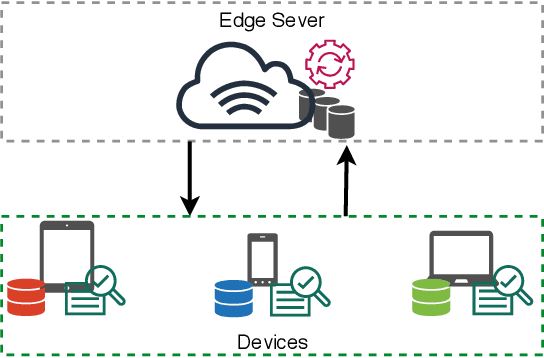
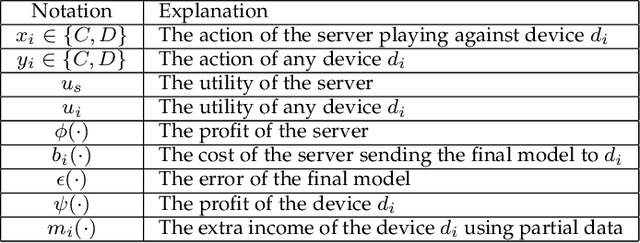


Abstract:The explosive amount of data generated at the network edge makes mobile edge computing an essential technology to support real-time applications, calling for powerful data processing and analysis provided by machine learning (ML) techniques. In particular, federated edge learning (FEL) becomes prominent in securing the privacy of data owners by keeping the data locally used to train ML models. Existing studies on FEL either utilize in-process optimization or remove unqualified participants in advance. In this paper, we enhance the collaboration from all edge devices in FEL to guarantee that the ML model is trained using all available local data to accelerate the learning process. To that aim, we propose a collective extortion (CE) strategy under the imperfect-information multi-player FEL game, which is proved to be effective in helping the server efficiently elicit the full contribution of all devices without worrying about suffering from any economic loss. Technically, our proposed CE strategy extends the classical extortion strategy in controlling the proportionate share of expected utilities for a single opponent to the swiftly homogeneous control over a group of players, which further presents an attractive trait of being impartial for all participants. Moreover, the CE strategy enriches the game theory hierarchy, facilitating a wider application scope of the extortion strategy. Both theoretical analysis and experimental evaluations validate the effectiveness and fairness of our proposed scheme.
Blockchain-based Federated Learning: A Comprehensive Survey
Oct 05, 2021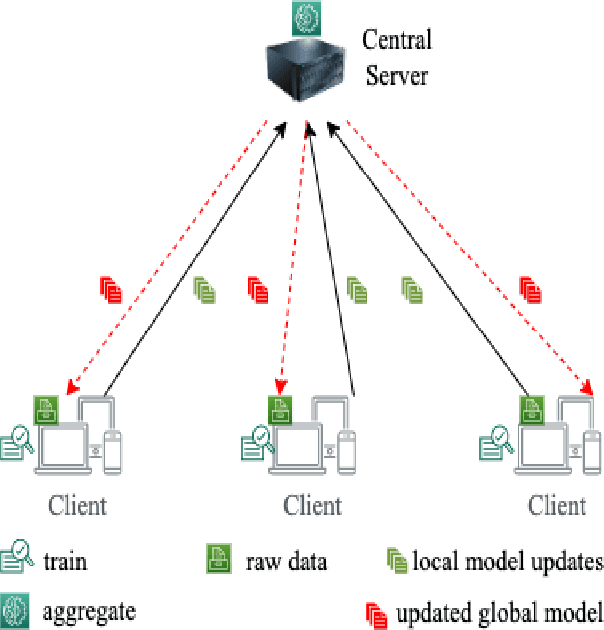
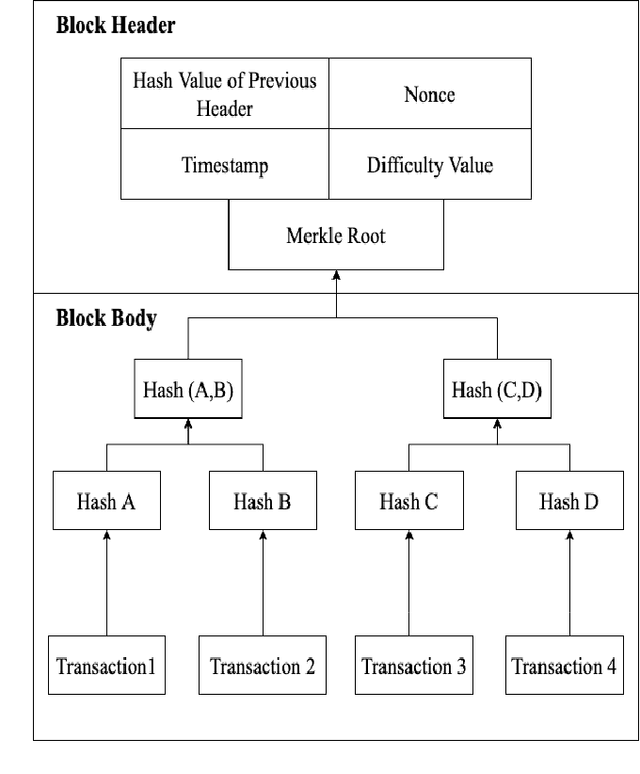
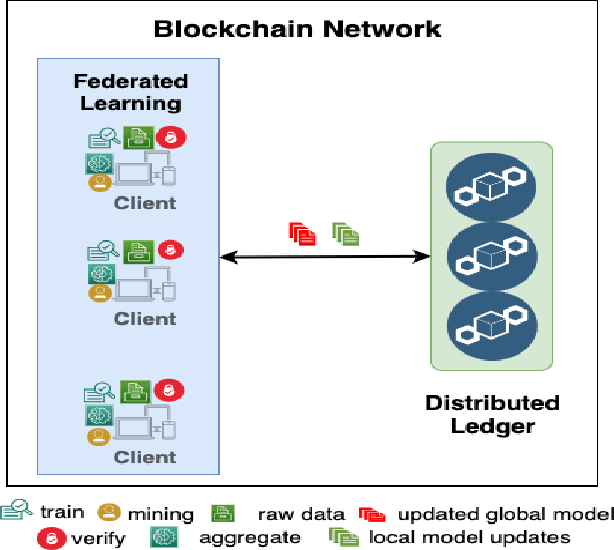
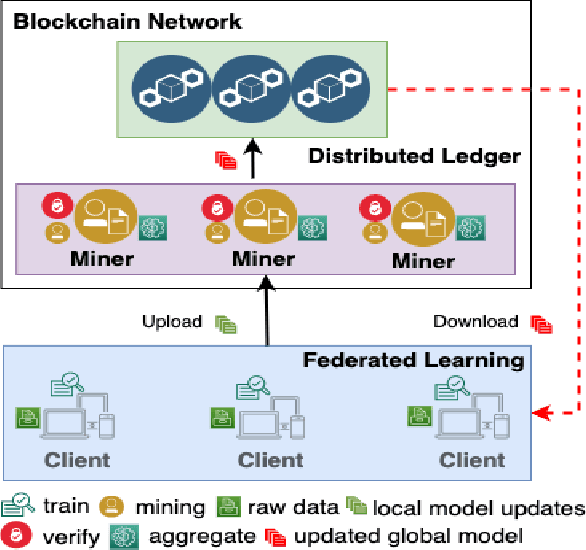
Abstract:With the technological advances in machine learning, effective ways are available to process the huge amount of data generated in real life. However, issues of privacy and scalability will constrain the development of machine learning. Federated learning (FL) can prevent privacy leakage by assigning training tasks to multiple clients, thus separating the central server from the local devices. However, FL still suffers from shortcomings such as single-point-failure and malicious data. The emergence of blockchain provides a secure and efficient solution for the deployment of FL. In this paper, we conduct a comprehensive survey of the literature on blockchained FL (BCFL). First, we investigate how blockchain can be applied to federal learning from the perspective of system composition. Then, we analyze the concrete functions of BCFL from the perspective of mechanism design and illustrate what problems blockchain addresses specifically for FL. We also survey the applications of BCFL in reality. Finally, we discuss some challenges and future research directions.
 Add to Chrome
Add to Chrome Add to Firefox
Add to Firefox Add to Edge
Add to Edge